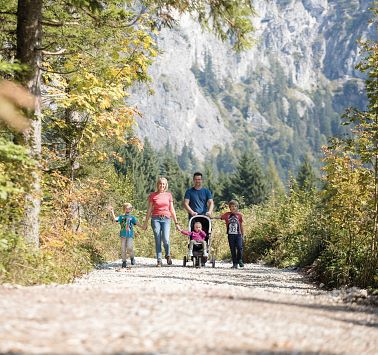Hiking

Ramsar conservation area
Preservation of wetlands and their biodiversity in the Wilder Kaiser region
#evenbetterinreality
If you've never heard of a "Ramsar conservation area", you probably don't live near a protected wetland, because that's exactly what the "Ramsar Convention" concerns. This convention was agreed upon in 1971. The drafting was initiated by UNESCO. One of the oldest international treaties on nature conservation, it was named after the Iranian town of Ramsar. Since then, 168 states have signed the convention.
There are currently 23 Ramsar sites in Austria and one of them is the Wilder Kaiser region. The mountain range, which combines several types of wetlands, has been protected under the "Ramsar Convention” since 2013. In addition, the entire Kaiser Mountains have been designated a nature reserve since the 1960s. Though both protection agreements are necessary due to human activity, the land which they protect long predates humans.
If you look back far enough in time, you'll come across some incredible animals that once inhabited the Wilder Kaiser region. Before the last ice age, cave bears, cave hyenas, cave lions and reindeer made their homes in the Wilder Kaiser region as evidenced by hundreds of bone finds from the Tischhofer cave. More inconspicuous, but no less spectacular, are the area’s contemporary inhabitants such as the green worm (Allolobophora smaragdina).
The wildlife is not the only thing that makes the Wilder Kaiser an area worth protecting; highly sensitive habitats such as the Hüttlmoos, Windwehenmoos and Steinbichlwaldmoor, which are all Ice Age relics, also require comprehensive protection. While these were drained in the 1950s, they were re-naturalised through an initiative of the Österreichische Bundesforste AG, as the largest landowner, and with the support of the State of Tirol.
Local transportation
The KaiserJet and our hiking buses will comfortably transport you to the starting point of your hike in the Wilder Kaiser Ramsar conservation area.
More
With a great deal of sensitivity, moorland experience paths with hiking routes were also created. Under the motto "Moor & More", an “"outdoor classroom"” was created that displays ample information so that you can enjoy a botanical excursion on your own. Based on an expert proposal from Dr. Gert Steiner of the University of Vienna, a significant part of the nature reserve, a karst area, was included in the Ramsar site in addition to the most important moorlands.